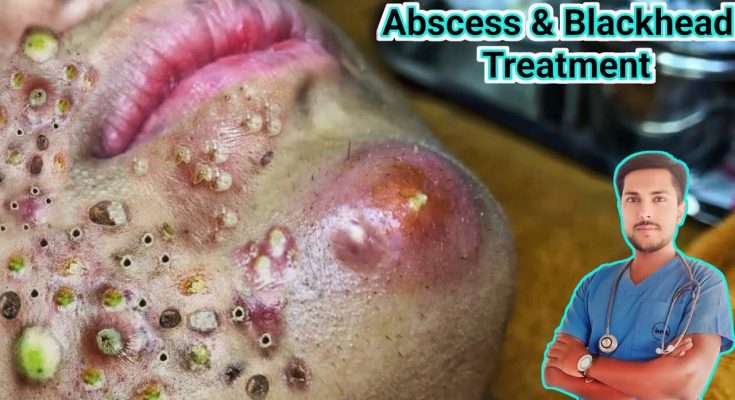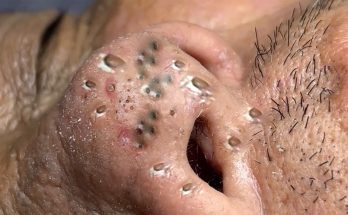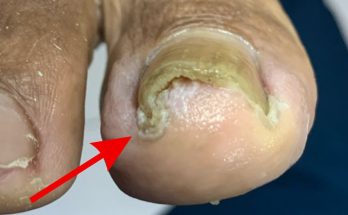Abscess: not a minuscule matter
An abscess or a boil can often occur in bodily organs. Some may think it is an insignificant matter that can heal without specific treatment. However, an untreated abscess can be harmful.
What is Abscess?
An abscess or a boil can often occur in bodily organs. Some may think it is an insignificant matter that can heal without specific treatment. However, an untreated abscess can be harmful. Let’s learn more about the subject.
An abscess is a pocket of pus that can form anywhere in or on the body – on the skin, the mouth, or the internal organs. When the body is infected, white blood cells travel to fight germs and build up within the damaged tissue, causing inflammation and swelling. If the swollen area fills up with pus, consisting of living and dead white blood cells, tissues, germs, and fluid, it becomes an abscess.
Skin abscesses are more common than the mouth and internal organ abscesses. If you develop one, you should see a doctor for a proper diagnosis and treatment to prevent the spread of infection.
Full Video Here:
Type of abscesses
Skin abscesses
These are the most common types that develop in the skin and is easily treatable.
- Armpit abscess due to hidradenitis suppurativa, an infection of the sweat glands, turning the armpit’s skin red and tender.
- Breast abscess is common in breastfeeding mothers.
- Anorectal abscesses such as a perianal or perirectal abscess
Mouth abscesses
Teeth, gums, and throat can be affected by abscesses. If an abscess forms around a tooth, it is called a dental or tooth abscess. Types of tooth abscesses include:
- Gingival abscess develops in the gums and does not typically affect the teeth.
- Periapical abscess forms at the tip of the root of a tooth due to cavities or dental injuries.
- Periodontal abscess is secondary to periodontitis or gum disease. The bones and tissues supporting the teeth are usually affected.
Other abscesses in the mouth are:
- Tonsil abscess is most common in adolescents and young adults.
- Peritonsillar abscess or quinsy.
- Retropharyngeal abscess occurs when lymph nodes in the back of the throat are infected.
Internal abscesses
Internal abscesses may develop in the brain, spinal cord, or other internal organs but are less common. They are harder to diagnose and treat.
- Spinal cord abscess
- Abdominal abscess may form inside or near the kidneys, pancreas, or liver.
- Brain abscess is rare. Bacteria from the bloodstream, a wound, or an infection in the head may enter the brain.

Symptoms
A skin abscess appears as a pus-filled bump. The skin around it typically looks red and swollen. It can cause symptoms such as:
- Pain.
- Fever and chills.
An abscess in the mouth can occur on the gum, jaw, floor of the mouth, or inside the cheek of the mouth. It can cause the following symptoms:
- Severe toothache or teeth sensitivity.
- Difficulty opening your mouth, chewing, or swallowing.
- Fever.
An abscess in the deeper layer of the skin or inside the body may not cause easily noticeable symptoms. However, you can still develop symptoms related to the affected body parts. Those symptoms are:
- Pain and tenderness.
- Fever and chills.
- Fatigue.
- Excessive sweating.
- Loss of appetite or weight.

When to see a doctor
You should receive treatment if the abscess persists longer than 2-3 days to prevent its rupture spreading and infection. You should see the doctor immediately if you develop a fever and increased pain.
Causes
Staphylococcus is the most common bacteria that causes abscesses. It is rare for fungi, viruses, or parasites to cause abscesses. When white blood cells fight the intruding bacteria, tissues nearby die, and inflammation ensues, forming a pus-filled pocket.
Diagnosis
- Physical examination can diagnose a skin abscess. A pus sample may be taken for testing to identify the type of bacteria and prescribe an appropriate treatment.
- Imaging tests such as ultrasound, CT scan, and MRI may be necessary to investigate internal abscesses.
Treatment
A minor skin abscess may resolve on its own. The application of a warm compress can encourage it to drain naturally. However, do not squeeze the pus out for fear of spreading the bacteria to other bodily areas.
For skin abscess treatment, antibiotics, along with surgical drainage, are typical. During the procedure, the doctor will give a local anesthetic before starting the incision to drain the pus and dead tissue. The incision will be left open so the remaining pus can continue to drain. A dry gauze dressing will cover the wound. You may need to change the wound dressing if it is soaked. A scar will develop within two weeks when the wound heals.
For gingival abscesses, surgical drainage is necessary. In some cases, it is a must to extract the tooth or perform a root canal, along with antibiotics. It is crucial to treat a mouth abscess as the infection can spread to the surrounding tissues causing fatal complications such as sepsis or necrotizing fasciitis.
The internal abscesses are treatable with needle aspiration under local or general anesthesia, depending on the abscess location. Through a small skin incision, with ultrasound or CT scan guidance, the doctor will insert the needle into the abscess, and a drainage catheter is threaded over a guidewire to drain the pus into the drainage bag. The catheter may be left in place for a week or more until the drainage dries up.
Prevention
To prevent skin or mouth abscesses, you should:
- Keep your skin clean and dry.
- Wash your hands often.
- Do not share personal items such as a toothbrush, towel, or razor.
- Avoid getting nicks from shaving.
- Maintain good dental hygiene.
- An internal abscess is usually a complication of another health condition, making it hard to prevent.
Article by
Dr Rapeephan R.Maude
A doctor specializing in infectious disease
Doctor profile



